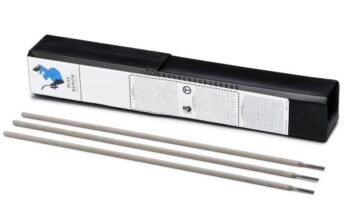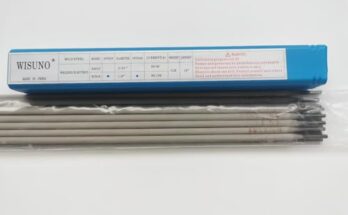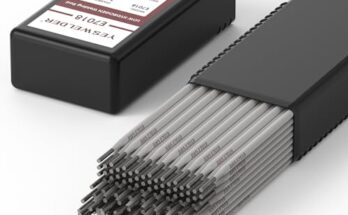Stick welding, or Shielded Metal Arc Welding (SMAW), has been a trusted method for decades. When I first started welding, I found stick welding to be one of the most accessible processes to learn. It’s simple, versatile, and doesn’t require an expensive setup. But as I worked on different projects, I also realized that stick welding has some limitations, especially when compared to other welding techniques like MIG and TIG.

Image by expressmetalindustries
If you’re wondering whether stick welding is the right choice for your project, it’s important to understand its advantages and disadvantages. Let’s dive into what makes stick welding great and where it falls short.
What is Stick Welding?
Stick welding uses a consumable electrode covered in flux to create a weld. The arc melts the electrode and base metal, while the flux coating produces a protective gas to shield the weld from contamination.
This process is widely used in construction, repair work, and pipeline welding because it’s portable, works well in outdoor conditions, and can handle thick materials. But like any welding method, it has pros and cons depending on the job requirements.
Advantages of Stick Welding
Stick welding has several benefits that make it a go-to method for many welders, especially in rough environments or repair work. Here are the biggest advantages:
Works in Any Environment
One of the best things about stick welding is that it works in almost any condition. Unlike MIG or TIG, which require shielding gas that can be disrupted by wind, stick welding relies on flux-coated electrodes. This means you can weld outdoors, even in wind, rain, or snow, without worrying about gas shielding issues.
Minimal Equipment Needed
Stick welding doesn’t require a complex setup. You need a welding machine, an electrode holder, a ground clamp, and the right electrodes for the job. There’s no need for gas cylinders, wire feeders, or expensive torches. This makes it one of the most cost-effective welding methods, especially for beginners or those working in remote locations.
Great for Thick Metals
If you’re working with thicker steel or heavy structural components, stick welding is an excellent choice. It provides deep penetration and strong welds, making it ideal for construction, shipbuilding, and industrial applications.
Portable and Easy to Move
Since there’s no need for shielding gas or complex equipment, stick welders are often lightweight and easy to transport. This is why it’s commonly used for field repairs, farm equipment, and remote job sites where bringing heavy equipment isn’t practical.
Works Well on Rusty or Dirty Metals
Unlike MIG or TIG welding, which require clean, contamination-free metal, stick welding can burn through rust, paint, or dirt. This makes it perfect for repairing old machinery, pipes, and farm equipment where surface preparation might not be perfect.
Versatile for Different Positions
Stick welding can be used in any position—flat, horizontal, vertical, or overhead. This is a major advantage when working on structures like pipelines, bridges, or tanks, where different angles and positions are required.
Strong and Durable Welds
The welds created with stick welding are strong and durable, making them suitable for structural applications. With the right electrode, it can produce welds that withstand high stress and extreme conditions.
| Advantages of Stick Welding | Why It’s Important |
|---|---|
| Works in any environment | Can be used outdoors, even in wind or rain |
| Minimal equipment required | Lower cost and easy setup |
| Great for thick metals | Provides deep penetration and strong welds |
| Portable and easy to move | No bulky gas tanks or complex machines |
| Works on rusty or dirty metal | Ideal for repairs and maintenance work |
| Versatile for all positions | Can weld overhead, vertical, or horizontal |
| Strong and durable welds | Suitable for heavy-duty applications |
Disadvantages of Stick Welding
While stick welding has many advantages, it also comes with some drawbacks. Understanding these limitations can help you decide if it’s the right choice for your project.
More Cleanup Required
One of the biggest downsides of stick welding is the amount of slag it produces. The flux coating on the electrode creates a protective layer that needs to be chipped away after welding. This means more time spent on post-weld cleanup compared to MIG or TIG welding.
Not Ideal for Thin Metals
If you’re working with thin materials (less than 1/8 inch thick), stick welding might not be the best option. The high heat input can easily cause warping, burn-through, or excessive spatter, making it difficult to get clean, precise welds.
Requires More Skill to Master
Compared to MIG welding, stick welding takes more practice to get good results. Holding a steady arc length, controlling the electrode angle, and managing slag can be challenging for beginners. If you’re new to welding, expect a learning curve before producing clean, strong welds.
Frequent Electrode Changes
Since stick electrodes burn down quickly, you’ll need to stop frequently to replace them. This can slow down your workflow, especially when compared to MIG welding, where a spool of wire feeds continuously.
Limited for Some Metals
Stick welding works best on carbon steel, stainless steel, and cast iron, but it’s not ideal for aluminum or thin non-ferrous metals. If you need to weld aluminum, you’ll likely need to switch to TIG or MIG welding.
Produces More Spatter
Stick welding often creates more spatter than other processes. This means extra time spent cleaning up the workpiece after welding. While some electrodes produce less spatter, it’s still something to consider.
| Disadvantages of Stick Welding | Why It’s a Challenge |
|---|---|
| More cleanup required | Slag needs to be chipped away after welding |
| Not ideal for thin metals | Can cause warping and burn-through |
| Requires more skill | Arc control and electrode angle are harder to master |
| Frequent electrode changes | Slows down workflow compared to MIG welding |
| Limited for some metals | Not ideal for aluminum or thin non-ferrous metals |
| Produces more spatter | Can make cleanup more time-consuming |
Conclusion
Stick welding is a powerful and versatile welding method, but it’s not perfect for every job. It’s great for outdoor work, thick materials, and structural welding, but it’s not the best choice for thin metals, aluminum, or precision work.
If you need a rugged, portable welding process that works in tough conditions, stick welding is hard to beat. It’s also an excellent skill to have, especially for repairs, farm work, and heavy-duty applications. But if you need cleaner welds with less cleanup, you might want to consider MIG or TIG welding.
Understanding both the advantages and disadvantages will help you choose the right welding method for your project. And like anything in welding, the more you practice, the better your results will be.
FAQs
Is stick welding good for beginners?
Stick welding is great for learning the basics, but it takes practice to master arc control and slag removal.
Can stick welding be used on aluminum?
No, stick welding is not recommended for aluminum. TIG or MIG welding is a better option.
Why does stick welding produce slag?
The flux coating on the electrode creates slag to protect the weld from contamination. It must be chipped off after welding.
What is the best electrode for stick welding?
The most common electrodes are 6010, 6011, 7018, depending on the material and job requirements.
Why does my stick weld have too much spatter?
Spatter can be caused by high amperage, poor arc control, or using the wrong electrode. Adjusting your settings can help reduce it.





